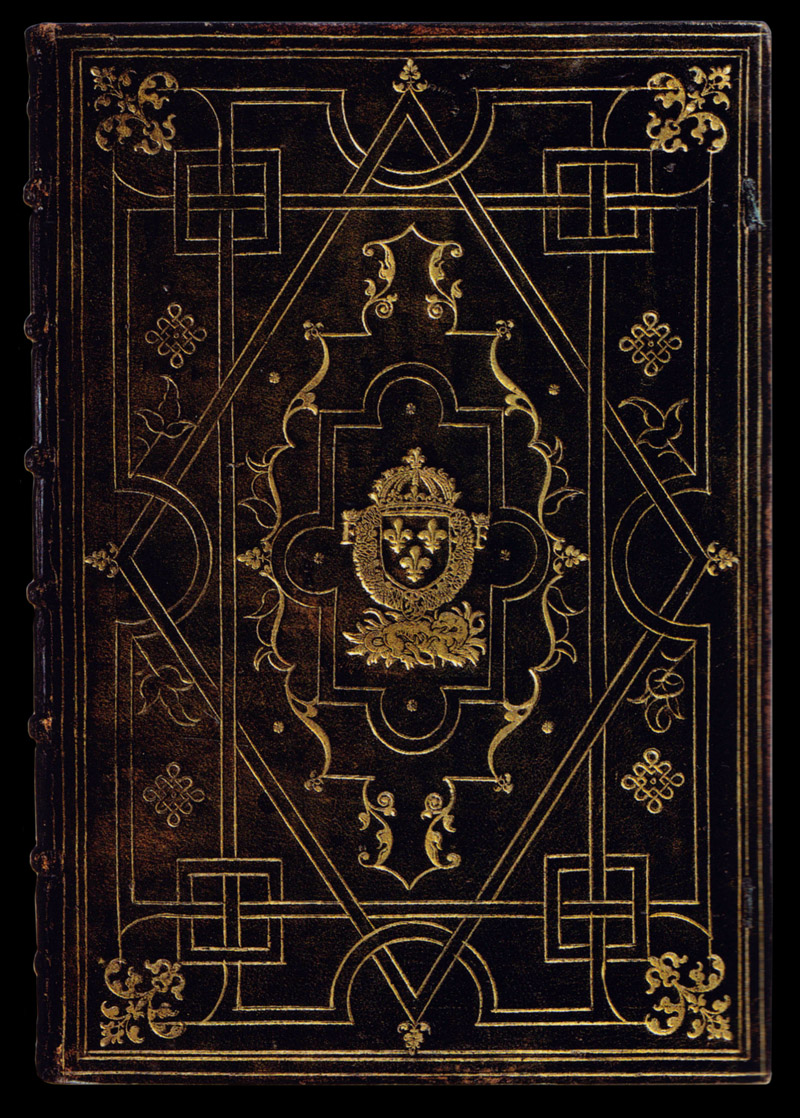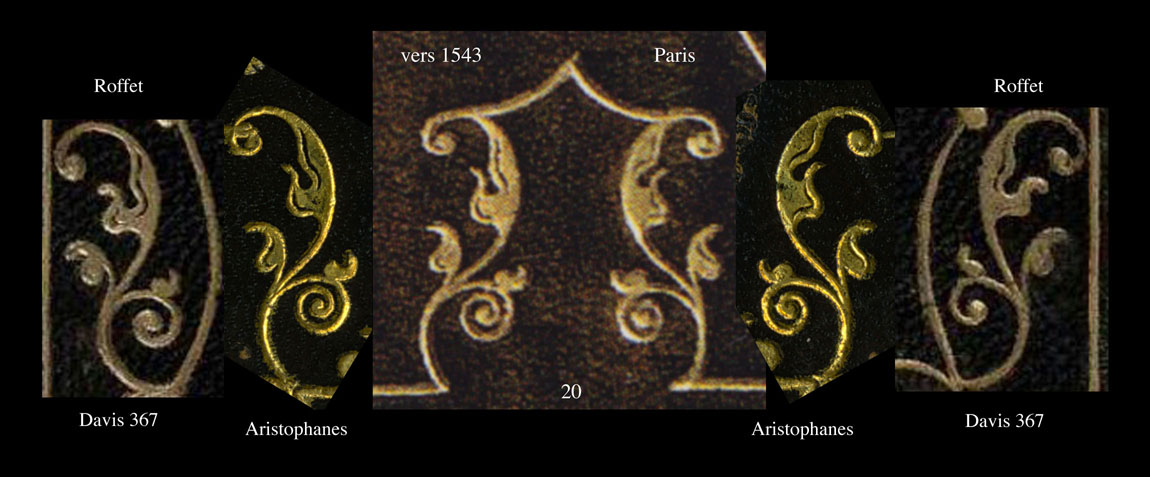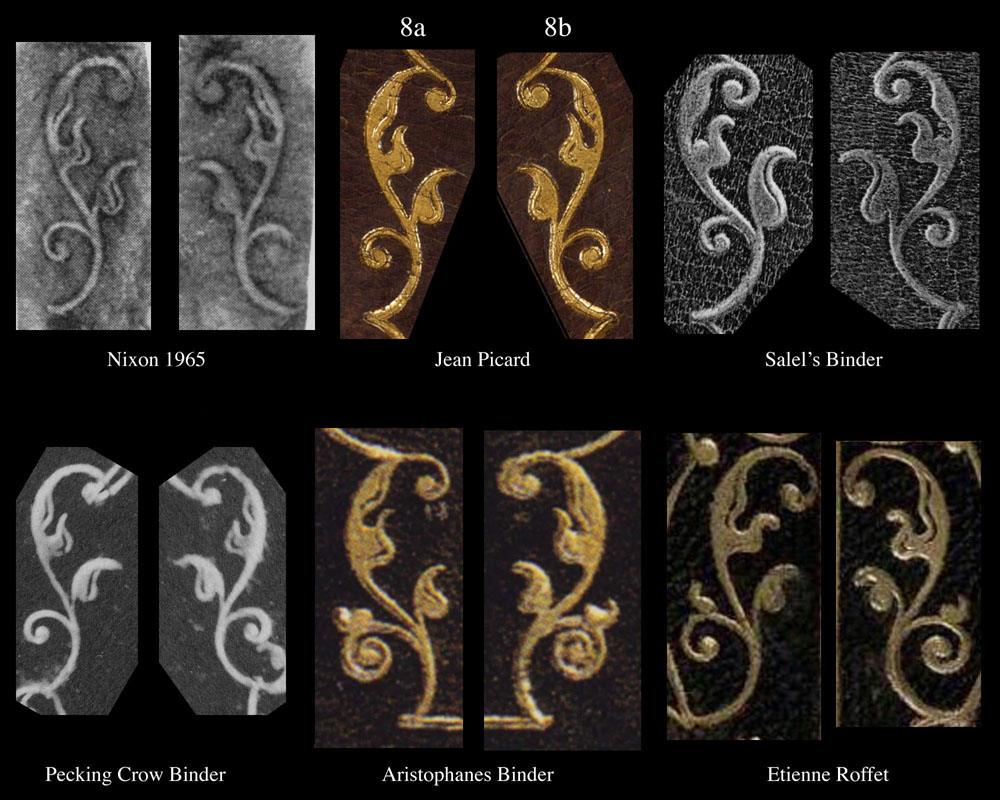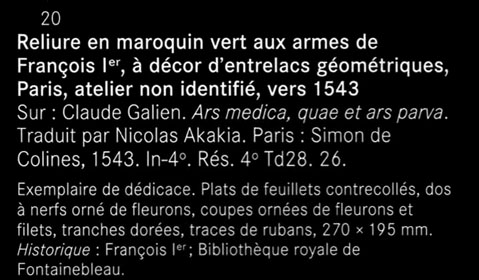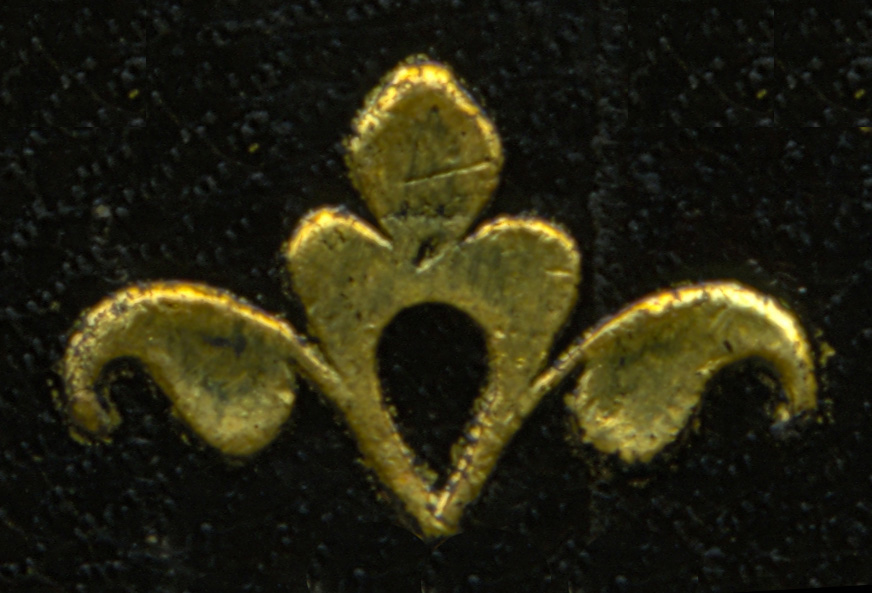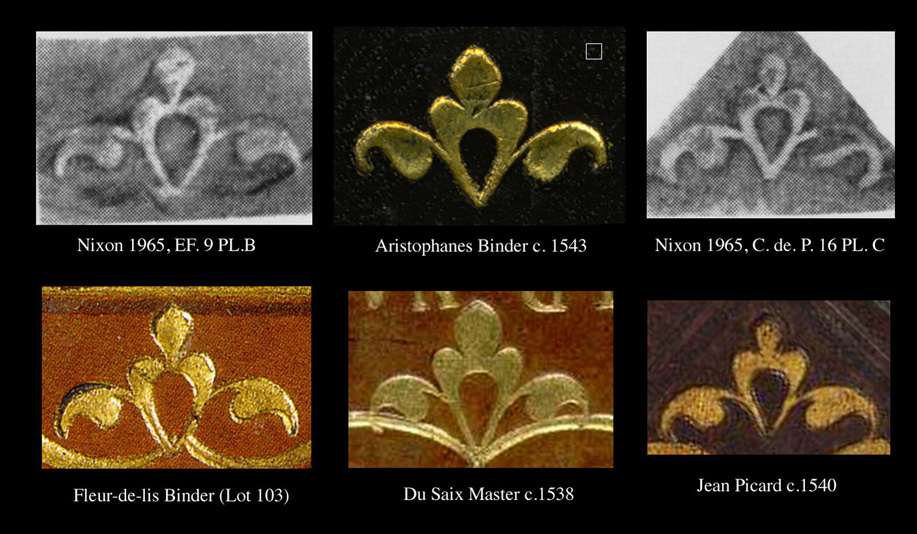In Comparative Diagram 3, we see that there is some sort of conspiracy involved in these corner assemblages, why is everyone using these near to identical tools in exactly the same way? The Aristophanes binder is obviously part of the club. Certainly Picard was one of the founder members and one wonders if Grolier might have had something to do with this. In his 1965 catalogue of Grolier bindings, H. M. Nixon presents the Fleur-de-lis binder as pre Picard. We can easily imagine Grolier asking Picard to copy the tools and designs of his previous binder, and perhaps this spilled over as a kind of fad among the other Parisian binders.
Our research of the past few months has reaffirmed some of Nixon's work that followed his 1965 catalogue. Mainly that Pierre Roffet was one of the first binders to work for Grolier after he left italy, these bindings appear to span the period from 1521 up to the year that Roffet died 1533. Perhaps his son Étienne Roffet who later became the first official King's binder, may have continued the work of his father, in which case he would be considered as candidate for the bindings of Grolier from 1533 to 1538. These have been attributed previously to the Fleur-de-lis Binder. I am not convinced that Étienne Roffet accomplished all the bindings attributed to the Fleur-de-lis Binder as he appears to have a different set of similar tools. In any case Picard soon took over the job at least by 1540 if not earlier. Most of this is well known with the exception of Pierre Roffet's work, this will be the subject of a new section that is now under construction. This work has brought me back to my atelier of Louis XII pages. And the realization that this work will never be complete without a firm grasp of the Renaissance bookbindings of the 15th century. At present I am grappling with Anthony Hobson's 1989 work Humanists and Bookbinders. Hobson's mind was able to absorb millions of details to produce this book, however for the average man, it will seem a rather chaotic collage. An ambitious young researcher would take all the bindings he has presented in this work and arrange them in chronologic order clearly stating first, the place of their origin and estimated date of manufacture. All to be presented with accurate scaling and above all in high resolution color. Just presenting faded low resolution black and white illustrations is not very useful. In fact this is the biggest problem with books today, it is virtually impossible to print a book like Humanists and Bookbinders with good color photos just due to the cost and even then the results would be mediocre due to the degraded state of modern publishing methods. What am I getting at? It is the fact that books are obsolete when it comes to reproducing what you will find in these pages here at Virtual Bookbinding, high resolution enlargements in color. The internet has opened a new way of presenting information in detail, that printed books can never hope to emulate, let alone the huge advantage of hypelinks that can take you instantaneously to references. In fact instantaneously to billions of research documents.
Still the internet is often perverted by narrow minded thinking, it is far from perfect, for example yesterday while searching for images of manuscripts by Bartolomeo Sanvito Italian scribe and illuminator (b. ca. 1435, Padova, d. ca. 1518, Padova) I visited this page, the title of the page is: Digital Medieval Manuscripts - Collections - Houghton Library - Harvard College Library.
|
